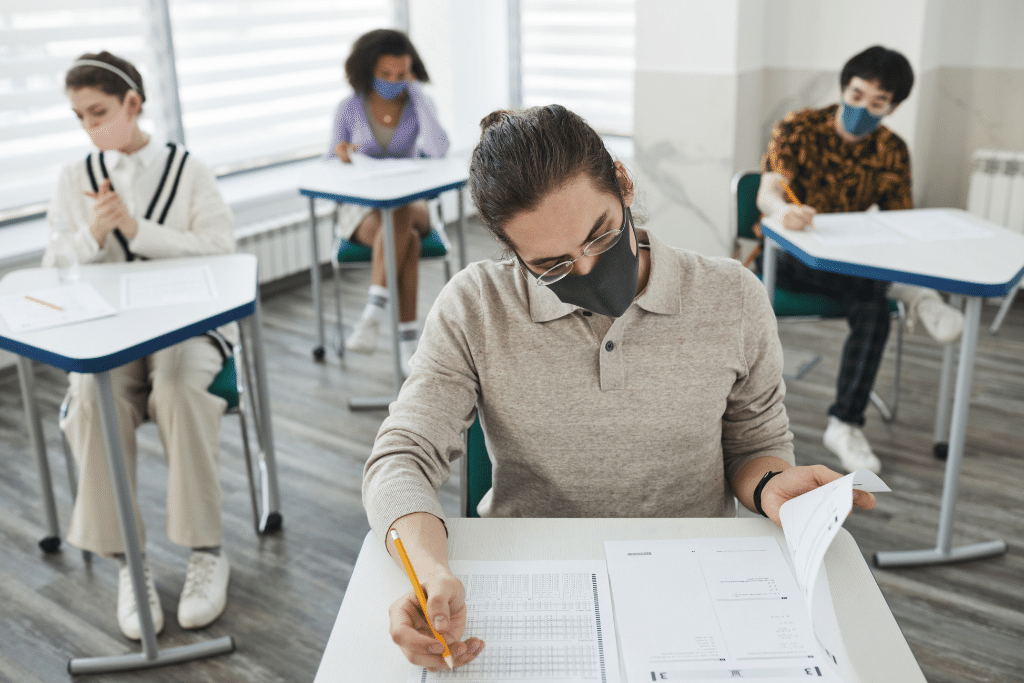A recent global survey about how schools use online classes showed that most students already had the electronic devices they needed. Only 8% purchased a new vehicle. The rest rented or borrowed one from someone else. And a small percentage had a school or person donate them. This is significant because, according to the same survey, eighty-six million students around the world do not have access to a computer or internet at home.
Student’s attitude towards online classes
The aim of this study was to evaluate the possibilities and limitations of emergency distance education in Turkey. To do this, a mixed-method approach was used to investigate students’ attitudes and experiences related to distance education. The data collected came from online questionnaires and semi-structured online interviews.

The survey included fifteen questions regarding the attitude of students towards e-learning. The responses were scored on a 1 to 5 Likert scale. Those who strongly agreed scored five points, those who disagreed scored two points, and those who were neutral scored one point. Students were asked to rate how likely it was that they would use e-learning in the future on a scale from 1 to 5.

The study’s results showed that students preferred online courses over traditional courses. They cited scheduling and travel issues as the primary reasons for choosing online courses. In addition, most students reported that they had a positive experience with the online format, but were dissatisfied with the quality of Internet connections. The study also found that students tended to be less active in the online format.
Cost of online classes
The cost of live online classes has dramatically altered the way many students get an education. Many elite institutions are now offering completely online classes at a substantial discount. This is allowing a broader range of people to gain an education without having to attend a physical campus. However, there are many drawbacks to this approach to education.

The cost of live online classes is usually much less than the traditional method, as there is no commuting. Some courses may even be free, and there is no need to pay for textbooks and other materials. In addition, many online courses include discussions and forums, which make them more dynamic.

In recent years, enrollment in online classes has increased, but the number of students who are solely taking face-to-face classes has declined. In 2016, more than six million students were enrolled in at least one online course. By 2018, the proportion of students taking online classes had reached 30 percent. The largest percentage of students taking online classes are enrolled in public and not-for-profit institutions.
Time spent on online classes
The rise of online courses has changed the way in which educators deliver education. For example, while lectures were traditionally one-way and delivered via private radio and television, the internet offers a more interactive experience that increases the student’s participation. The transition to online classes was a significant milestone in the evolution of education.

While the move from traditional education to online classes has its benefits, it has also come with a number of challenges. First, students must have a reliable Internet connection. Second, they must be able to access a computer for schoolwork. In some countries, such as the US, 95% of students have access to a computer and use it for their schoolwork.

Another challenge is that online classes can be more stressful for students. The increased isolation and lack of human interaction caused by online classes can lead to increased psychosocial stress. It’s also difficult to establish social bonds with others who were formerly your peers.
Effects of the COVID-19 pandemic on lesson design
Because of the COVID-19 pandemic, teachers are thinking about how this new disease might change their lessons. For example, many NEA members have developed lesson plans to address the issue. These lessons focus on topics that are important right now, such as the spread of new diseases and the role of environmental health. These lessons also aim to reduce student anxiety by providing them with real information about the pandemic.

In addition to providing lesson plans that address the pandemic’s impact on education, there is a need to consider the different needs and circumstances of different groups of students. For instance, the effects of COVID-19 may be exacerbated for students who live in vulnerable areas. Furthermore, students may be suffering from a range of problems, including job loss and food insecurity. Consequently, this new pandemic may make it harder for them to focus and learn in class.

The COVID-19 pandemic is likely to have a lasting impact on the way lessons are designed. The constraints placed on educators will force educators to rethink their traditional methods. In particular, it will force educators to reconsider the way they deliver content online. The greater variance between teaching and learning activities will also call into question the importance of “seat time” as a standard for educational credits. For example, long Zoom sessions don’t teach people much and don’t follow the psychological rules of how people learn.





